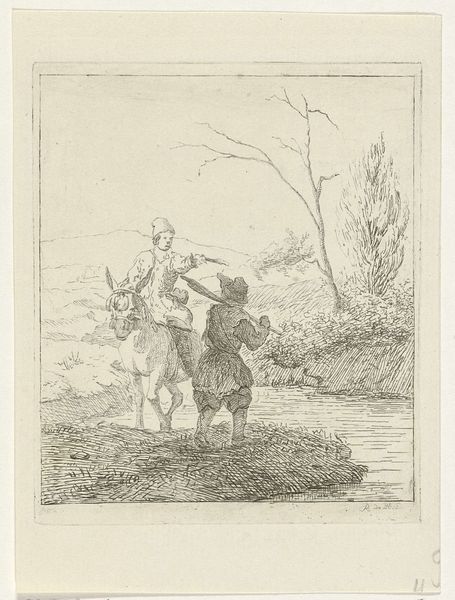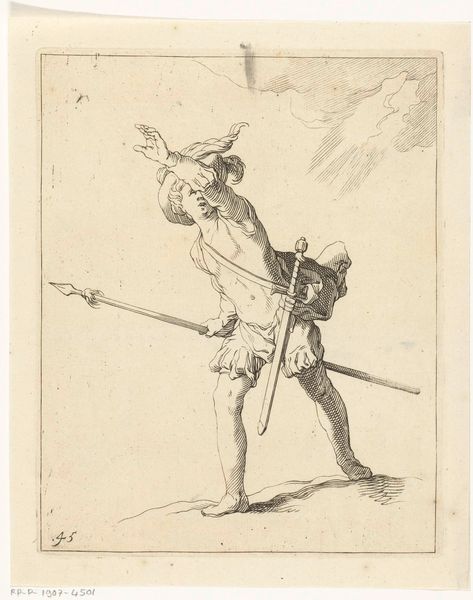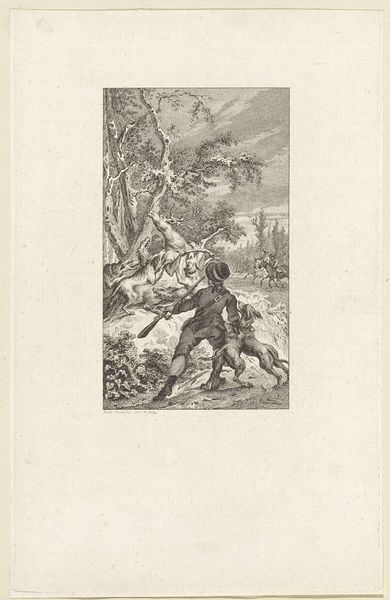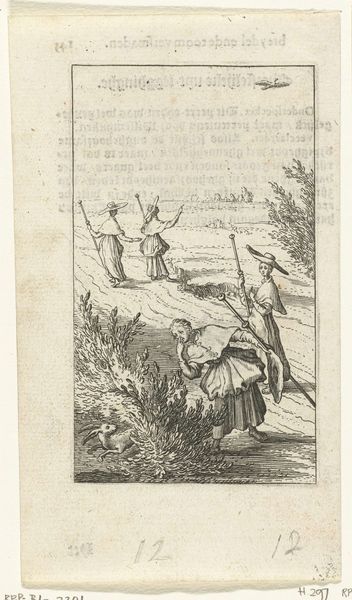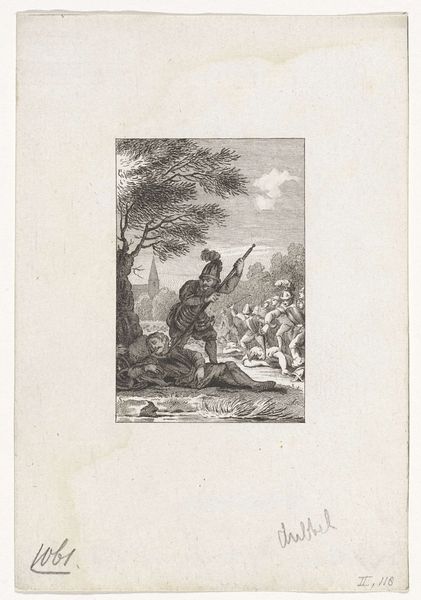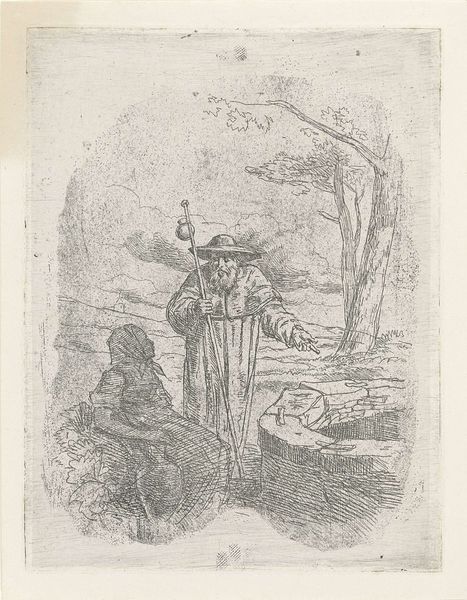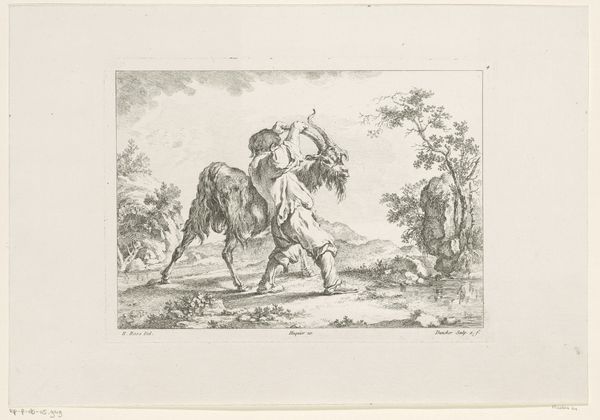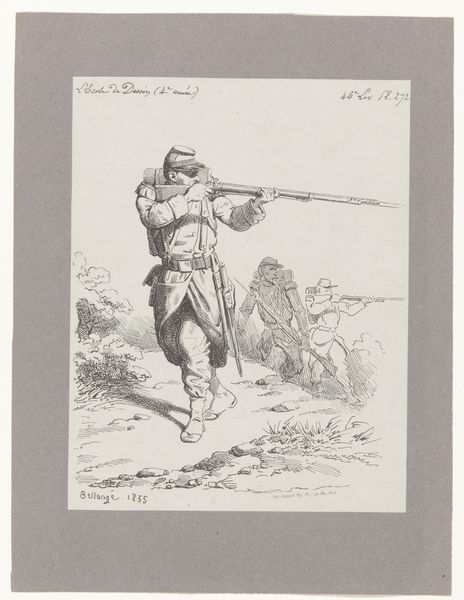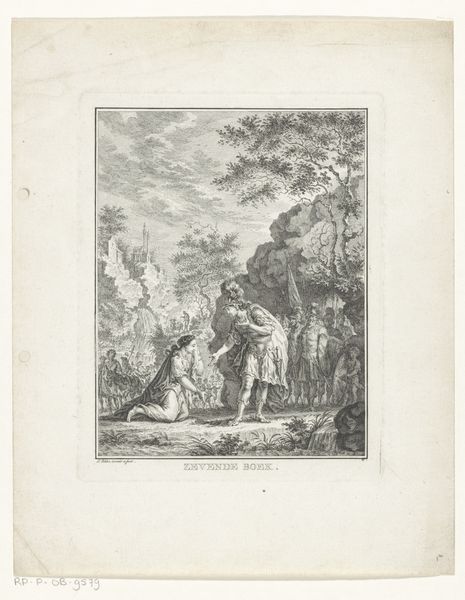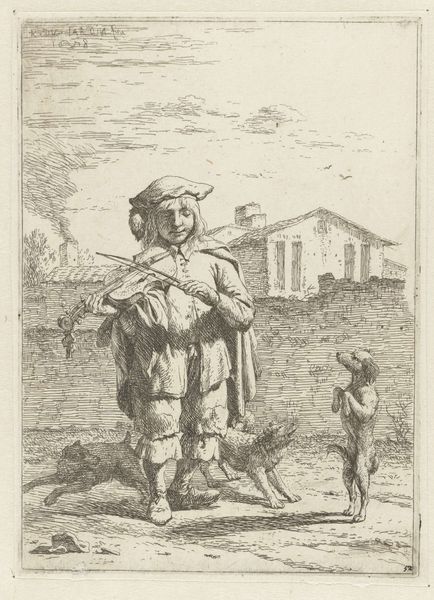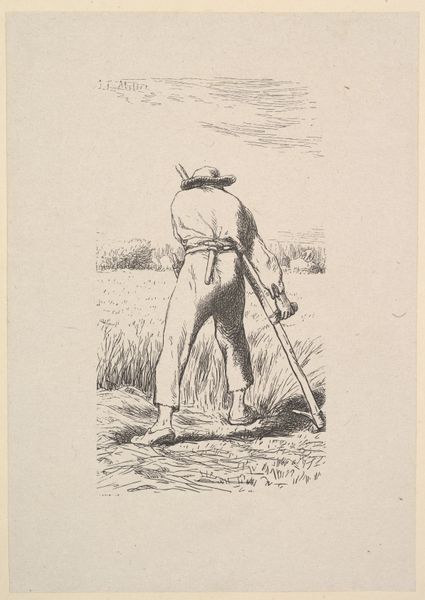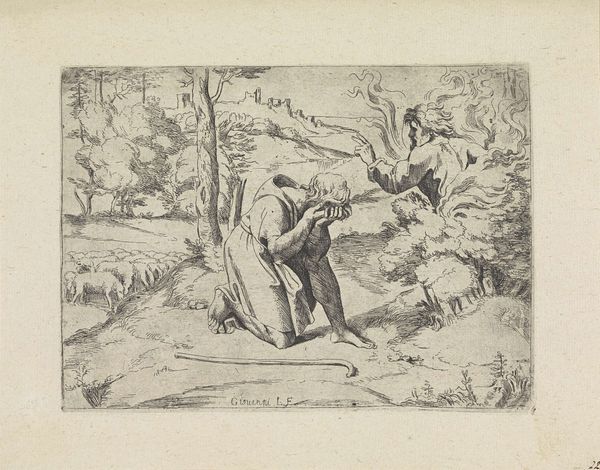
drawing, ink
#
drawing
#
pen sketch
#
pencil sketch
#
landscape
#
ink
#
romanticism
#
genre-painting
Dimensions: height 109 mm, width 91 mm
Copyright: Rijks Museum: Open Domain
Curator: I find myself immediately drawn to the stark contrast within this piece; there’s a real sense of the transient about it. Editor: This ink and pen drawing, "Two Men by a River", attributed to Reinierus Albertus Ludovicus Baron van Isendoorn à Blois, falls somewhere in the period of 1796 to 1856. The baron was, as his name suggests, part of the Dutch aristocracy and quite active as an amateur artist. Curator: "Amateur" is doing a lot of work here; but let's consider that aristocracy and its attendant wealth afforded him the means of artistic production, time and resources without the pressures of needing to sell his works on the market. It really influences the sort of aesthetic we're witnessing. Editor: Absolutely. It is a seemingly simple composition - one figure riding a donkey gestures across a narrow river to another figure, but seen in the context of aristocratic patronage and artistic expression of the time, that romanticism feels incredibly constructed. The themes within it suggest genre painting, a sentimental view of everyday life. Curator: I see a raw immediacy to the use of ink. The artist's hand is so clearly visible. Think about the texture of that shore in the foreground, for instance. Those little furious scribbles denoting grasses! There is an element of the almost slapdash, possibly because he didn't rely on selling works, as we were just saying. It has a fascinating, unfussy materiality that, to me, enhances its sincerity despite the constructed themes you astutely point out. Editor: And yet that apparent freedom is so firmly rooted in his social position. I imagine, how many similarly skilled artists without the means simply lacked access to materials like ink and fine paper? Or lacked access to the leisurely lifestyle needed to pursue landscape drawing as a pastime? This drawing becomes more about documenting its history and socio-economic framework rather than about aesthetic intent, for me at least. Curator: Indeed. It invites us to think not only about artistic vision but the material conditions that allowed that vision to come to fruition. The social stratification becomes part of the material itself. Editor: I agree, it’s a confluence of circumstances that is etched into every line and shadow, making us consider art's role and creation in that specific societal frame.
Comments
No comments
Be the first to comment and join the conversation on the ultimate creative platform.
